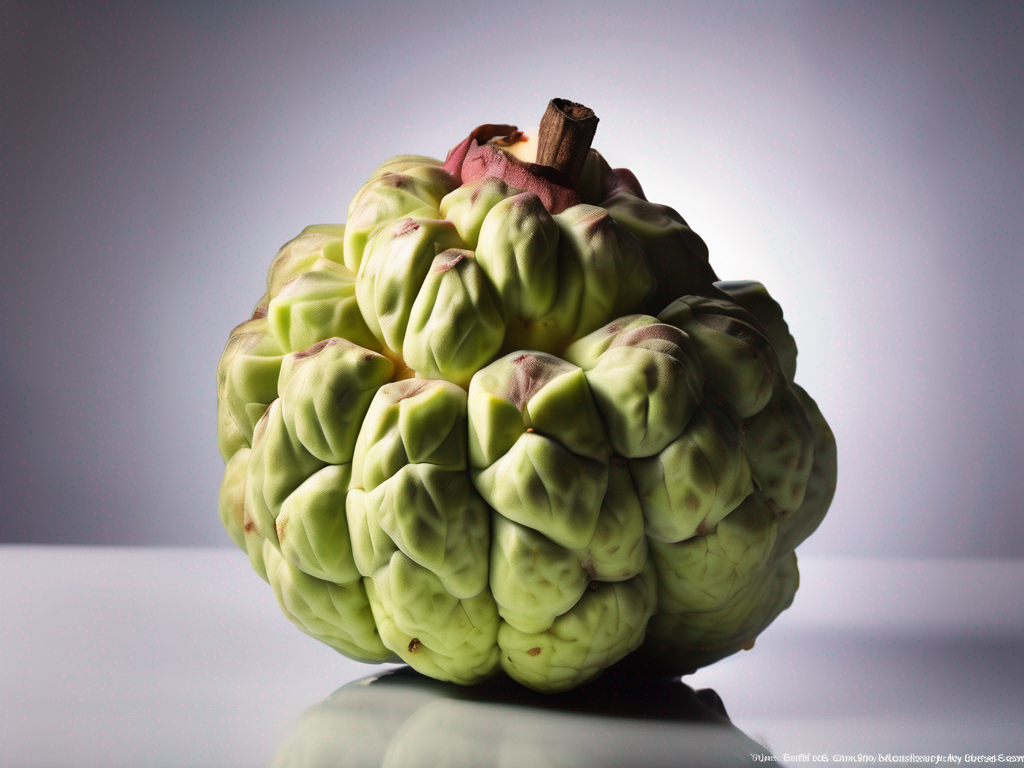
Is Your Custard Apple Still Good to Eat?
Get Your Free Food Safety Cheat Sheet
30 most common foods with instant answers. Print it and stick it on your fridge—completely free!
Is Your Custard Apple Still Good to Eat?
Custard apples are a delicious tropical fruit with a sweet and creamy flesh that many people enjoy. However, like any perishable food item, custard apples can go bad if not stored or handled properly. In this article, we will discuss how to determine if your custard apple is still good to eat, along with some tips on how to store them correctly to prolong their shelf life. (Custard apple)
How to Choose a Ripe Custard Apple
When selecting a custard apple, it is essential to choose one that is ripe and ready to eat. Here are some tips on how to pick the perfect custard apple:
Look at the Skin
- The skin of a ripe custard apple should be firm but yield slightly to pressure.
- Avoid custard apples with bruises, blemishes, or soft spots, as these are signs of spoilage.
Check the Color
- A ripe custard apple typically has a greenish-brown skin, with patches of brown or black.
- The skin may also have a slightly wrinkled appearance, indicating that the fruit is ripe.
Give it a Gentle Squeeze
- A ripe custard apple will give slightly when squeezed gently.
- However, it should not be too soft, as this could indicate overripeness.
Smell the Fruit
- A ripe custard apple will have a sweet and fragrant aroma.
- If the fruit smells musty or sour, it may be past its prime.
Signs that Your Custard Apple is Spoiled
Even if you carefully select a ripe custard apple, it is essential to check for signs of spoilage before consuming it. Here are some indicators that your custard apple may be spoiled:
Mold Growth
- Visible mold on the skin of the custard apple is a clear sign that the fruit is no longer safe to eat.
- Mold can spread quickly, so it is crucial to discard the fruit if you notice any signs of mold growth.
Unpleasant Odor
- If your custard apple emits a foul or fermented odor, it is likely spoiled.
- Trust your sense of smell and discard the fruit if it does not smell fresh.
Changes in Texture
- A custard apple that feels excessively soft, mushy, or slimy to the touch is past its prime.
- The texture of the flesh should be creamy and smooth when the fruit is ripe.
Discoloration
- Dark or discolored patches on the skin or flesh of the custard apple indicate spoilage.
- Fresh custard apples should have vibrant greenish-brown skin and creamy white flesh.
Taste Test
- If you are unsure whether your custard apple is still good to eat, you can perform a taste test.
- Spoiled custard apples may have a bitter or off-flavor that is unpleasant to eat.
Proper Storage Tips for Custard Apples
To extend the shelf life of your custard apples and keep them fresh for longer, it is essential to store them correctly. Here are some practical tips for storing custard apples:
Store at Room Temperature
- Custard apples should be stored at room temperature until they are fully ripe.
- Once ripe, you can transfer them to the refrigerator to slow down the ripening process.
Keep them Separate
- Do not store custard apples with other fruits that produce ethylene gas, such as bananas or apples.
- Ethylene gas can speed up the ripening process and cause the custard apples to spoil faster.
Use Proper Ventilation
- Store custard apples in a well-ventilated area to prevent moisture buildup, which can lead to mold growth.
- Avoid storing them in airtight containers or plastic bags, as this can cause the fruit to rot.
Check Regularly
- Check your custard apples regularly for any signs of spoilage, such as mold or soft spots.
- Remove any spoiled fruit immediately to prevent the spread of mold to the remaining custard apples.
Consume Promptly
- Custard apples have a relatively short shelf life once ripe, so it is best to consume them promptly.
- If you cannot eat them right away, consider freezing the flesh for later use in smoothies or desserts.
Conclusion
In conclusion, custard apples are a delicious and nutritious fruit that can spoil if not handled properly. By following the tips outlined in this article, you can ensure that your custard apples stay fresh and safe to eat. Remember to check for signs of spoilage, store them correctly, and consume them promptly to enjoy their sweet and creamy flavor to the fullest. By taking these simple precautions, you can savor the taste of custard apples while avoiding food waste and potential health risks. (Custard apple)
Authoritative Food Safety References
These agencies and university labs inform every tip and health precaution we publish.
USDA FoodKeeper – Cold Storage Guidelines
Official refrigerator, freezer, and pantry timelines maintained by the U.S. Department of Agriculture.
Visit USDA FoodKeeperFDA Produce Safety Rule & Grower Guidance
Field-to-fridge handling practices that prevent contamination of fruits, vegetables, and leafy greens.
Visit FDA Produce SafetyCDC Foodborne Illness Prevention Hub
Surveillance-backed guidance on pathogens, symptoms, and steps to reduce foodborne illness risk.
Visit CDC Food SafetyUC Davis Postharvest Technology Center
University research detailing optimal storage atmospheres for produce after harvest.
Visit UC Davis PostharvestPenn State Extension – Home Food Preservation & Safety
Peer-reviewed extension bulletins on safe canning, chilling, and reheating practices.
Visit Penn State ExtensionGet Your Free Food Safety Cheat Sheet
30 most common foods with instant answers. Print it and stick it on your fridge—completely free! Want more? Upgrade to the complete guide with 70+ foods.
Scan your food directly and get instant safety info using our AI-powered camera feature.